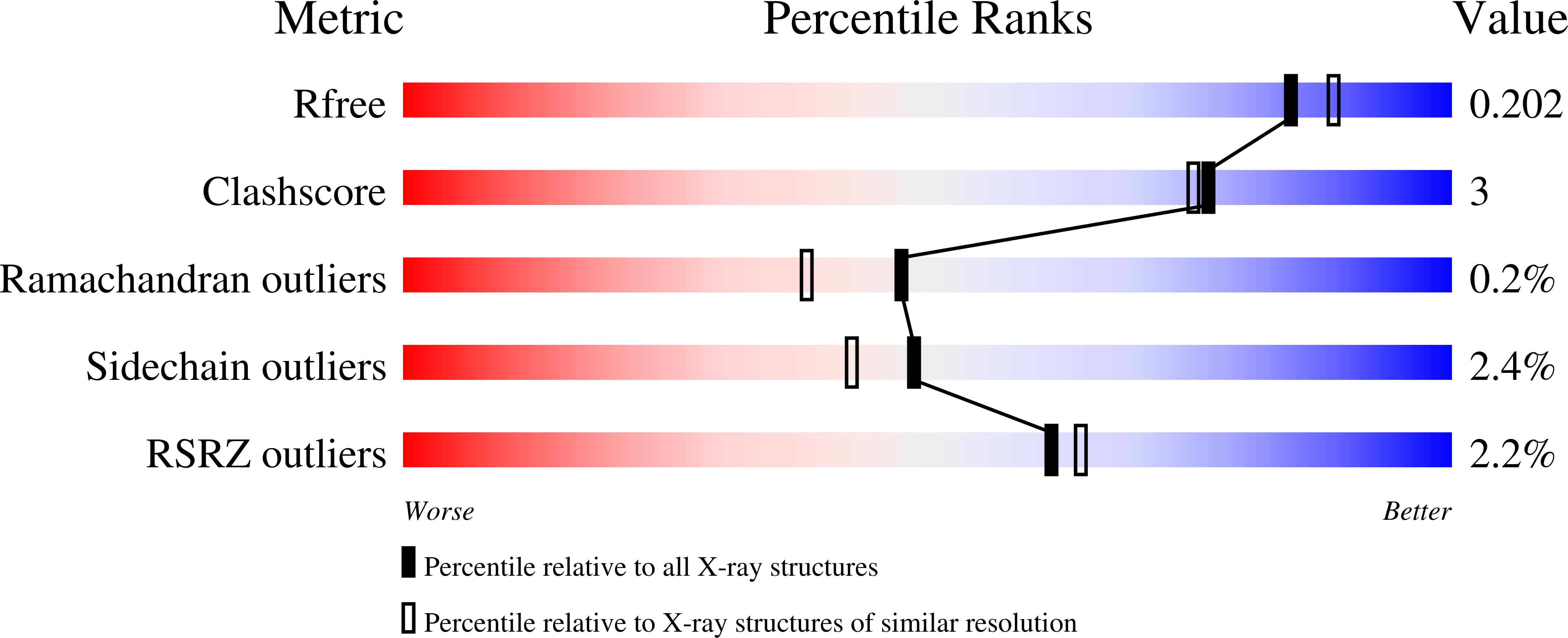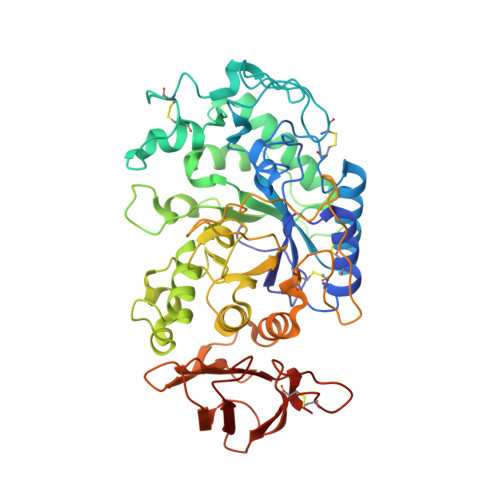Probing the role of a mobile loop in substrate binding and enzyme activity of human salivary amylase
Ramasubbu, N., Ragunath, C., Mishra, P.J.(2003) J Mol Biol 325: 1061-1076
- PubMed: 12527308
- DOI: https://doi.org/10.1016/s0022-2836(02)01326-8
- Primary Citation of Related Structures:
1JXK, 1MFU, 1MFV - PubMed Abstract:
Mammalian amylases harbor a flexible, glycine-rich loop 304GHGAGGA(310), which becomes ordered upon oligosaccharide binding and moves in toward the substrate. In order to probe the role of this loop in catalysis, a deletion mutant lacking residues 306-310 (Delta306) was generated. Kinetic studies showed that Delta306 exhibited: (1) a reduction (>200-fold) in the specific activity using starch as a substrate; (2) a reduction in k(cat) for maltopentaose and maltoheptaose as substrates; and (3) a twofold increase in K(m) (maltopentaose as substrate) compared to the wild-type (rHSAmy). More cleavage sites were observed for the mutant than for rHSAmy, suggesting that the mutant exhibits additional productive binding modes. Further insight into its role is obtained from the crystal structures of the two enzymes soaked with acarbose, a transition-state analog. Both enzymes modify acarbose upon binding through hydrolysis, condensation or transglycosylation reactions. Electron density corresponding to six and seven fully occupied subsites in the active site of rHSAmy and Delta306, respectively, were observed. Comparison of the crystal structures showed that: (1) the hydrophobic cover provided by the mobile loop for the subsites at the reducing end of the rHSAmy complex is notably absent in the mutant; (2) minimal changes in the protein-ligand interactions around subsites S1 and S1', where the cleavage would occur; (3) a well-positioned water molecule in the mutant provides a hydrogen bond interaction similar to that provided by the His305 in rHSAmy complex; (4) the active site-bound oligosaccharides exhibit minimal conformational differences between the two enzymes. Collectively, while the kinetic data suggest that the mobile loop may be involved in assisting the catalysis during the transition state, crystallographic data suggest that the loop may play a role in the release of the product(s) from the active site.
Organizational Affiliation:
Department of Oral Biology, University of Medicine and Dentistry of New Jersey, Newark, NJ 07103, USA. n.ramasubbu@umdnj.edu

















